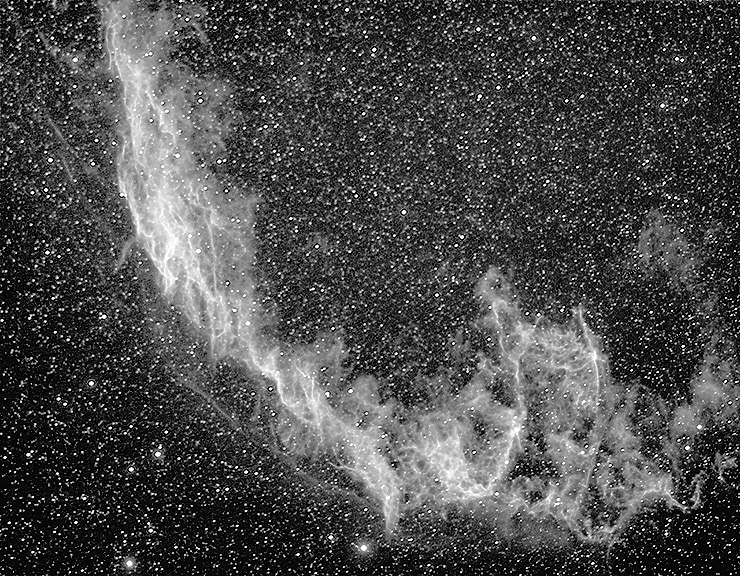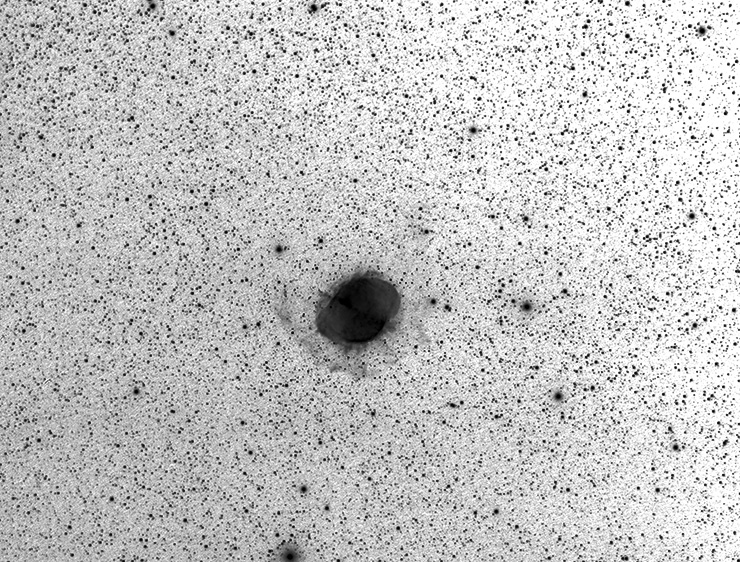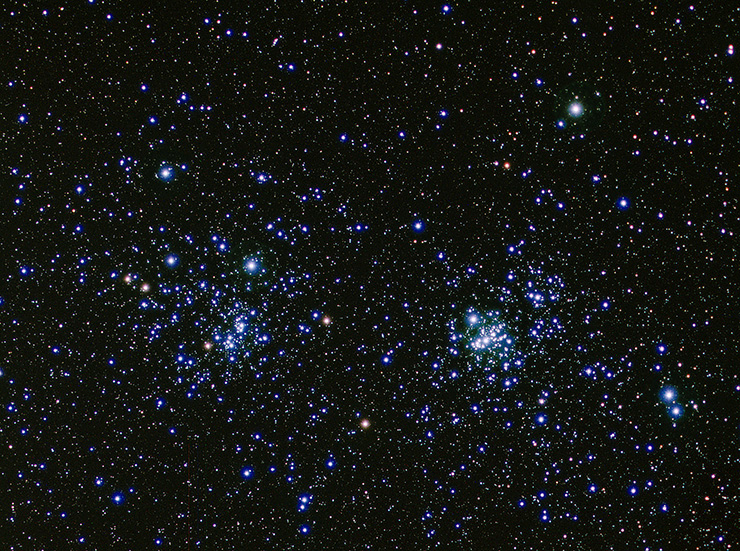The Starry Night, 29 :: home :: |
|
11/12/2010: These are a few of my favorite things. Before getting really ambitious with this astrophoto rig, I've been practicing on some old favorites. Some are favorite sights, some favorite photo targets, some are favorite puzzles: objects that I always have trouble finding manually (the Mach1 dials them in for me with no difficulty whatsoever). It's late; these are first looks; I wouldn't be at all surprised if newer, better versions of all these images (as well as a lot more commentary) turns up on this page soon. The Veil Nebula, the latest incarnation of this week's data. I've reprocessed the h-a frames in an effort to bring out the shock fronts within the bright arc as well as reveal the subtle sheets of glowing gas ahead of them and show off the complex interaction with the interstellar medium at the lower right. Still no luck doing it justice in color, but that will come by and by.
22x900 (5h30m) NGC 891 and environs. This is one of those can't-find-it-if-my-life-depended-on-it objects. I wanted to see if I could show the galaxy to good advantage and also show the distant Abell cluster lying off to one side. Not so successful yet. Needs more color data to try to distinguish the faint fuzzies at lower left from the bright foreground stars. And it could use sharper detail within 891, too. I need to think about this one.
< Luminance: 7x900s (1h 45m)
M27, a planetary nebula in Vulpecula. It's big and it's bright and I can never find it when I want to. Best method of late: look halfway between Albireo and the trapezoidal asterism in Delphinus. That works for binoculars and a very widefield eyepiece. With the A-P mount, I pressed a few buttons and it was on the chip. I had a couple of goals with this subject: a nice color image, and a deep h-a image to see if I could catch the outer rings from previous episodes of shell ejection. Here you go: a deep h-a, same in negative form to make the faint stuff more obvious, and a nice RGB composite:
H-a image: 12x900s
(4 hours)
The Double Cluster. I fell in love with this view ages ago, using a 3.5-inch telescope from my dad's family farm in middle Tennessee. Ever since, it's been a kind of home in the sky: put anything from binoculars to a 16-inch reflector in this field, and you, too, can be lost in the stars. Nothing in the sky so deserves the common comparison with a box of jewels spread on a black velvet background.
12x300s in R, G, and B (3 hours total)
For comparison, here's
a single set of 300s R, G, B subs combined into a color image. What
does 3 hours get on this subject that 15 minutes doesn't? Cleaner black
space, but not that much cleaner. I'm thinking the Everhardt Doctrine
needs to be invoked: "Sometmes too much is just too much."
Them what know have mentioned that the blue channel is bloated in the long exposure image. In this much shorter exposure (over 12x shorter!), it's better but still a little wild. I'll try a Baader fringe-killer to see if that reins it in. There are some faint green reflections from the AstroDon generation one filters, too, which I've reduced using "select color" and reducing luminance in Photoshop. |
:: top ::
© 2010, David Cortner






